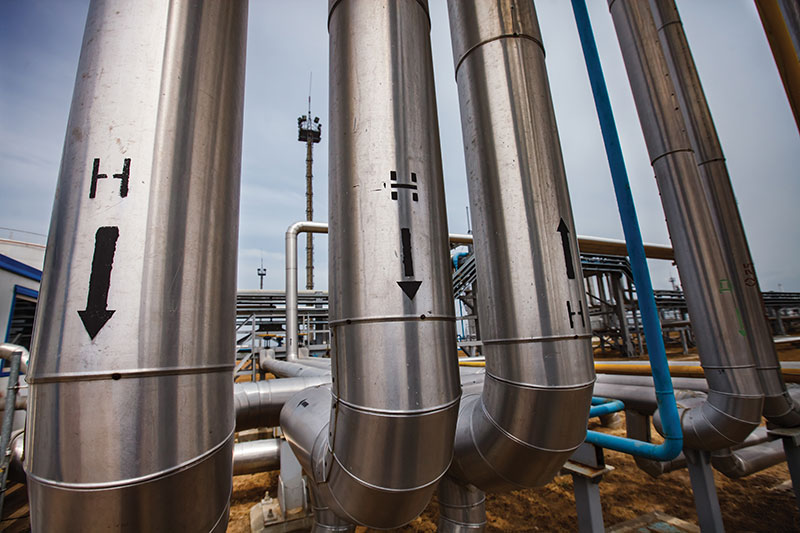Australian Gas Networks Looking to Include Hydrogen in Infrastructure
MELBOURNE (Reuters) — Australia's natural gas pipeline owners are working to future proof their A$75 billion ($59 billion) in assets amid a global push towards clean energy, running tests to blend hydrogen with gas and produce green methane to replace the fossil fuel.
Cashing in on rare bipartisan support for hydrogen across Australia's national and state governments to help cut carbon emissions, pipeline and network owners have already committed A$180 million to a range of projects involving green hydrogen.

Australian states have pledged to achieve net zero carbon emissions by 2050, in line with many developed countries, but Canberra has yet to commit to the 2050 timeframe.
"It's a business risk we all need to manage," said Ben Wilson, chief executive of Australian Gas Infrastructure Group (AGIG), owned by units of Hong Kong-based CK Group.
"What started out as defensive has become an opportunity, particularly given our renewable energy sources. We can become the world's largest exporter of green hydrogen," he told Reuters.
Pipeline owners seeking government funding for hydrogen projects aim to show how their infrastructure can be used to deliver hydrogen in blends with gas and store hydrogen as a form of renewable energy storage.
"At the end of the day, we also think that continuing to use this infrastructure allows the whole economy to decarbonize at a lower cost," said Dennis Van Puyvelde, head of gas for Energy Networks Australia.
A study done for the industry body last year found that to achieve net zero emissions by 2050, building a hydrogen distribution network would cost half as much as expanding power networks to serve businesses and industries that currently rely on gas, and save Australia some A$13 billion.
Pipeline companies are working on a shorter time frame than 2050, as some states are pushing to have 10% hydrogen in gas pipelines by 2030.
EYES ON GREEN METHANE
A study done for the government found hydrogen can be safely added to gas supplies at up to 10% by volume without having to modify pipelines or appliances.
Van Puyvelde said the advantage of blending hydrogen into gas allows for a gradual buildup of the hydrogen industry, requiring electrolysers of up to 1 gigawatt, compared with the much bigger, more costly electrolysers that will be needed for green hydrogen exports.
In the first test of hydrogen into a distribution network in Australia, AGIG is set to start injecting a 5% blend of green hydrogen by volume in gas next month, going into 700 homes in Adelaide.
Jemena, a company owned by State Grid Corp of China and Singapore Power, is working on a similar government-backed project in Sydney, blending up to 2% hydrogen into the country's biggest local gas network later this year.
More projects are in the works, with pipeline companies shortlisted for A$70 million in hydrogen funding from the government, the Australian Renewable Energy Agency said.
For the longer term, the industry is closely watching Europe's biggest energy grid operator, E.ON, which is converting a gas pipeline in Germany to deliver pure hydrogen.
Beyond hydrogen, the ideal replacement for natural gas would be green methane, if it could be produced commercially. Methane is chemically the same as natural gas, the fossil fuel.
Testing the potential, APA Group, Australia's biggest pipeline company, is building a demonstration plant in the state of Queensland that would use solar energy to power an electrolyser to split water, produce hydrogen and combine that with carbon dioxide extracted from the air to produce methane.
The project has attracted interest from U.S. companies, and if it works, could aid all companies around the world, like APA, that have billions of dollars invested in pipelines serving liquefied natural gas (LNG) plants.
"Assuming it's successful, it would be compatible with existing LNG infrastructure. You wouldn't need to retrofit," APA's head of transformation Hannah McCaughey told Reuters. ($1=1.269 Australian dollars)
Related News
Related News

- Kinder Morgan Proposes 290-Mile Gas Pipeline Expansion Spanning Three States
- Valero Plans to Shut California Refinery, Takes $1.1 Billion Hit
- Three Killed, Two Injured in Accident at LNG Construction Site in Texas
- Tallgrass to Build New Permian-to-Rockies Pipeline, Targets 2028 Startup with 2.4 Bcf Capacity
- TC Energy Approves $900 Million Northwoods Pipeline Expansion for U.S. Midwest
- New Alternatives for Noise Reduction in Gas Pipelines
- EIG’s MidOcean Energy Acquires 20% Stake in Peru LNG, Including 254-Mile Pipeline
- Construction Begins on Ghana's $12 Billion Petroleum Hub, But Not Without Doubts
- DOE Considers Cutting Over $1.2 Billion in Carbon Capture Project Funding
- Valero Plans to Shut California Refinery, Takes $1.1 Billion Hit




Comments